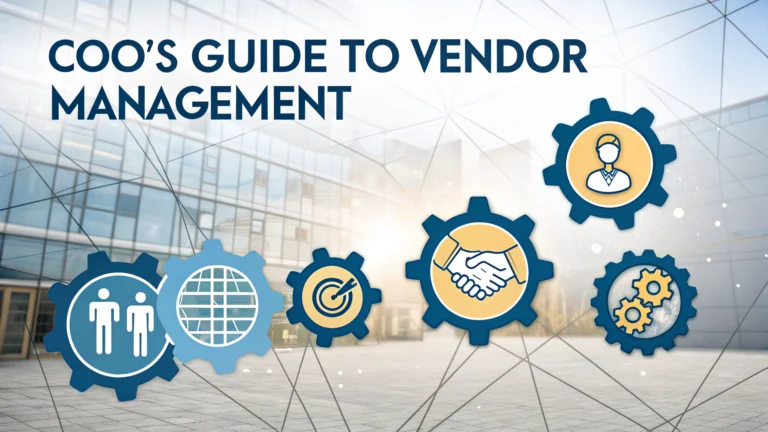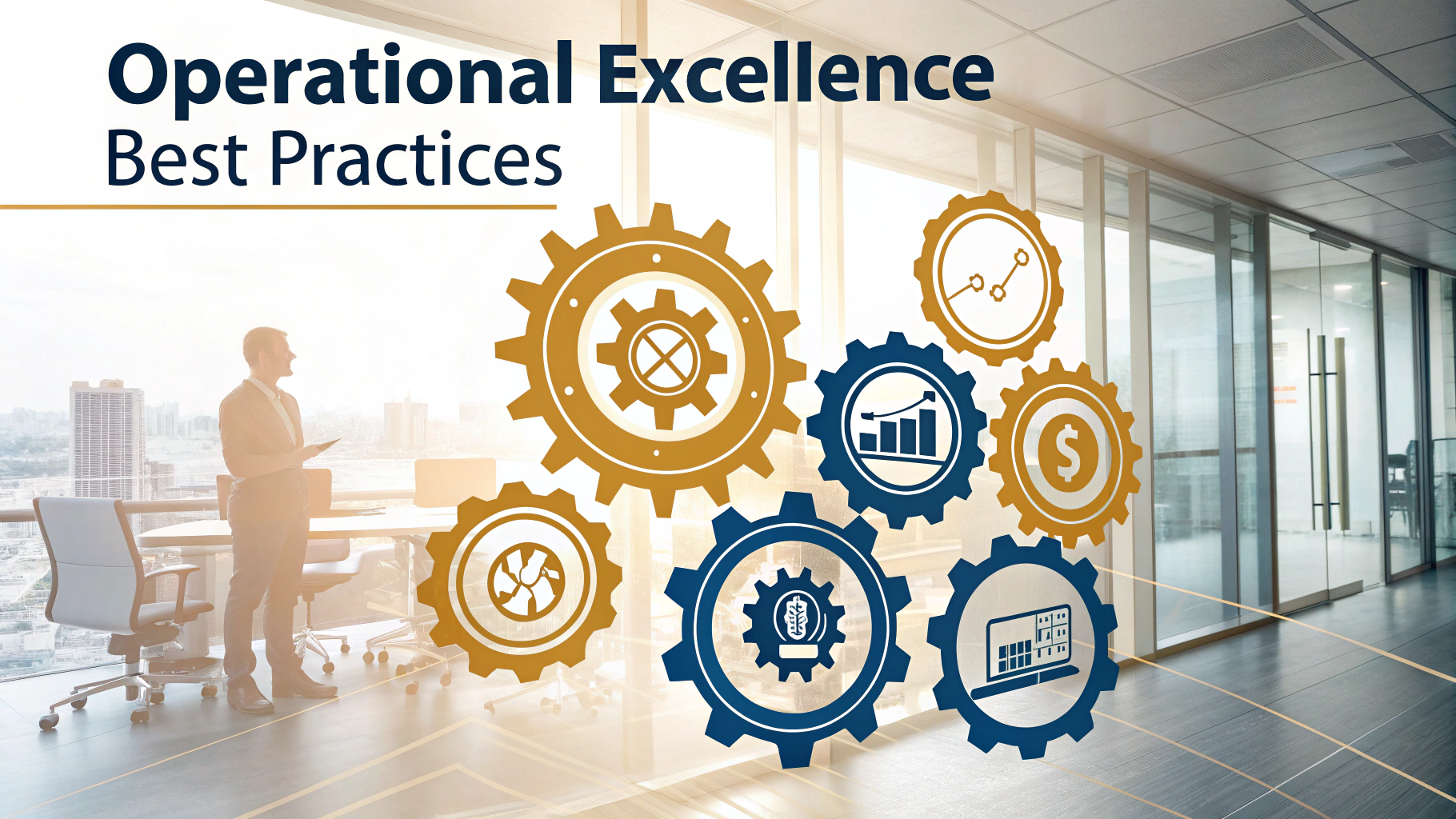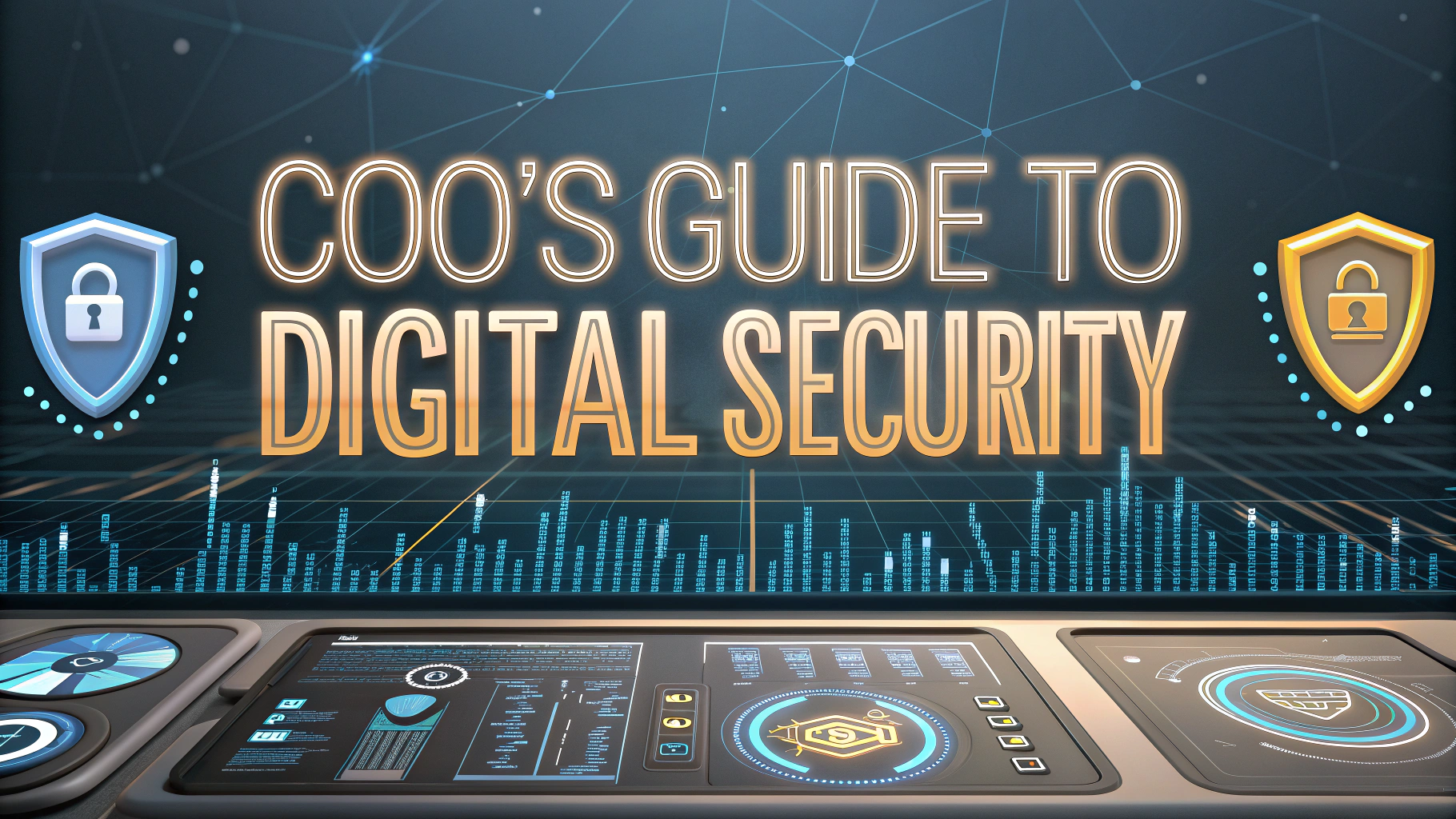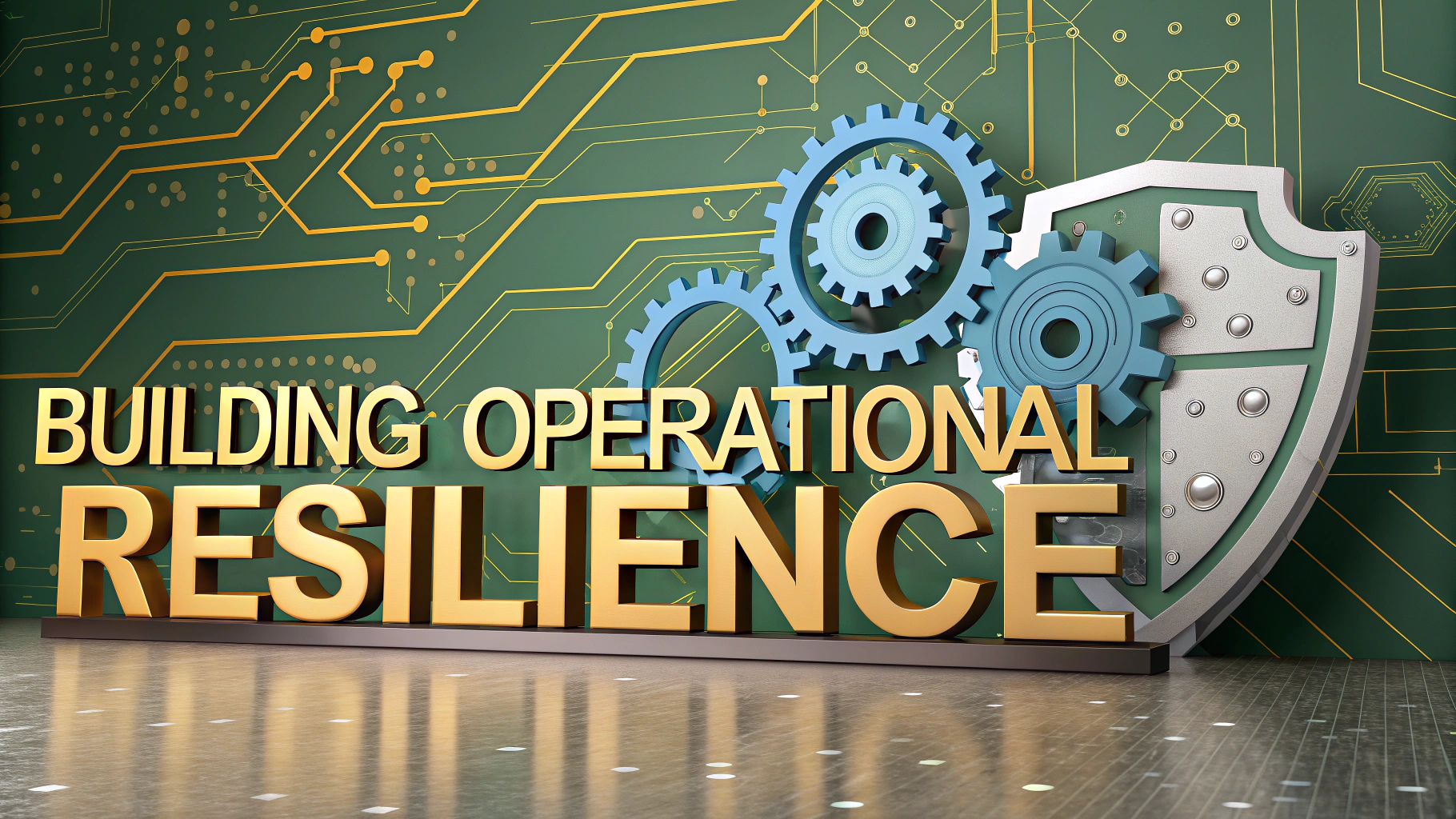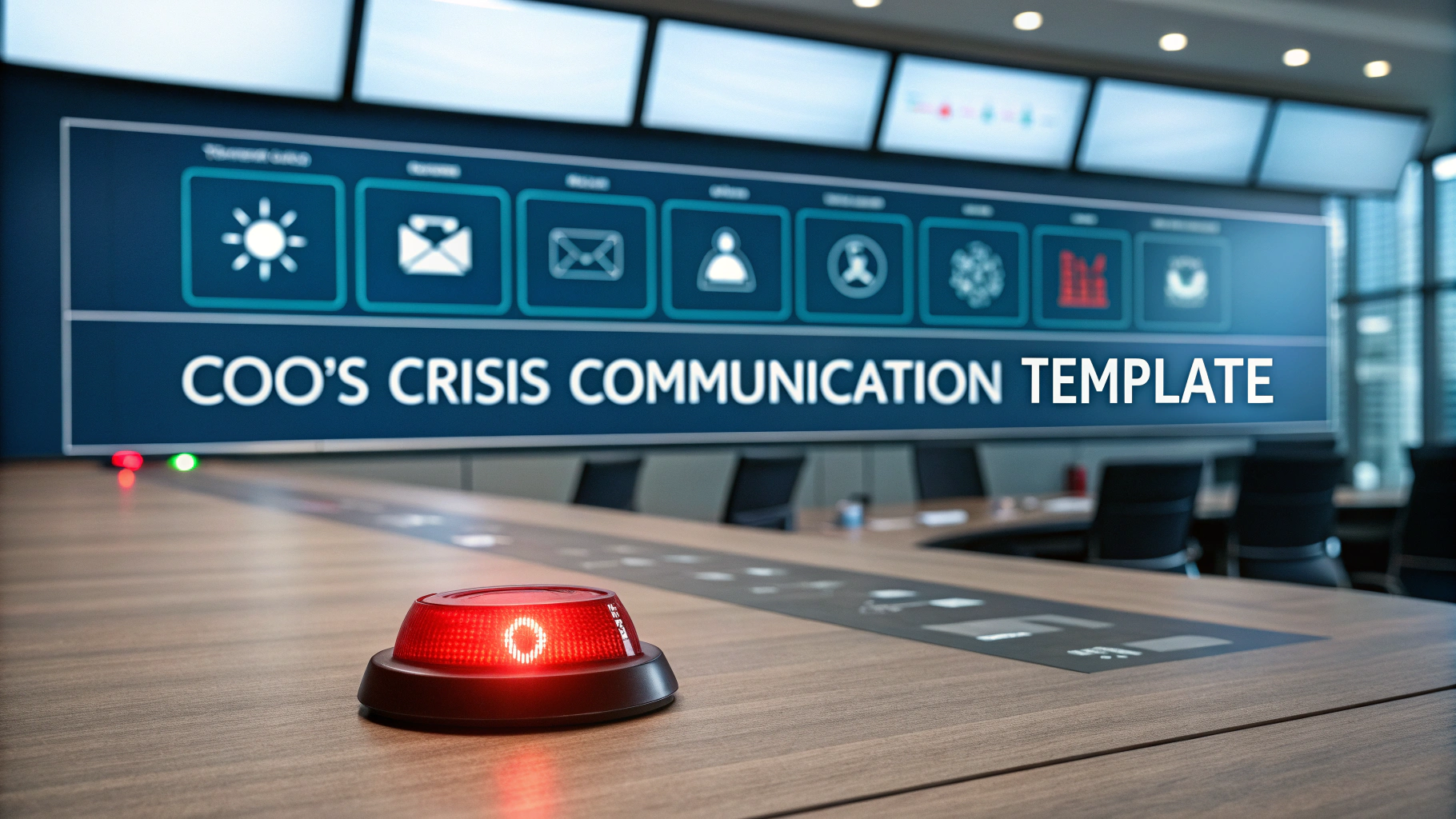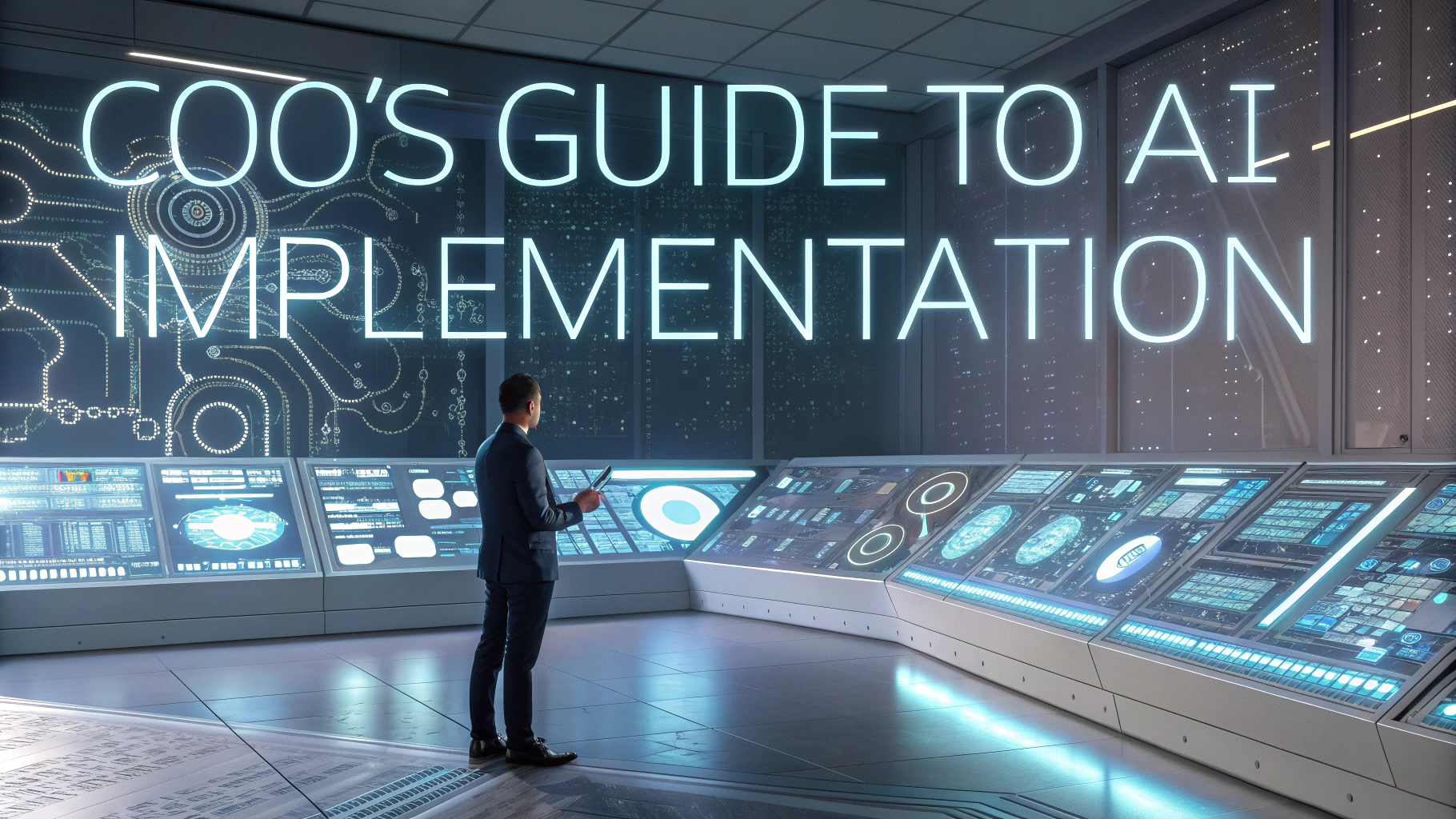A well-structured vendor management strategy helps organizations optimize supplier relationships, reduce costs, and minimize operational risks.
This guide outlines proven methods for building and maintaining effective vendor partnerships while ensuring compliance and continuous performance improvement.
Learn how to develop clear metrics, negotiate better contracts, and create sustainable supplier relationships that drive business value.
Key Components of Strategic Vendor Management
- Vendor selection and evaluation framework
- Risk assessment protocols
- Performance metrics and KPIs
- Contract management systems
- Supplier relationship development
Setting Up Your Vendor Management Office (VMO)
A dedicated VMO should include representatives from procurement, legal, finance, and key business units.
Core VMO Responsibilities:
- Vendor selection oversight
- Contract negotiations
- Performance monitoring
- Risk management
- Relationship maintenance
Vendor Selection Process
- Define business requirements
- Create RFP documentation
- Evaluate proposals
- Conduct due diligence
- Negotiate terms
Risk Management Framework
| Risk Category | Mitigation Strategy |
|---|---|
| Financial | Regular financial health checks |
| Operational | Backup supplier arrangements |
| Compliance | Regular audits |
Performance Monitoring
Implement a balanced scorecard approach to track vendor performance across multiple dimensions.
Key Metrics to Track:
- On-time delivery rates
- Quality metrics
- Cost savings achieved
- Response times
- Customer satisfaction scores
Contract Management Best Practices
- Use standardized templates
- Include clear SLAs
- Define escalation procedures
- Establish review cycles
- Document change management processes
Technology and Tools
Implement vendor management software to automate and streamline processes.
Recommended Solutions:
- SAP Ariba (Enterprise-level)
- Coupa (Mid-market)
- Jaggaer (Industry-specific)
Building Strong Vendor Relationships
- Schedule regular review meetings
- Share strategic plans
- Develop joint improvement initiatives
- Create clear communication channels
Next Steps for Implementation
Start with a pilot program focusing on your top 5-10 strategic vendors.
Document current processes and identify gaps in your vendor management approach.
Contact industry associations like the Institute for Supply Management (ISM) at www.ismworld.org for additional resources and training.
Implementation Timeline
Following a structured timeline ensures proper adoption of vendor management practices across the organization.
30-Day Actions:
- Form VMO team
- Assess current vendor base
- Identify technology requirements
- Draft initial policies
60-Day Actions:
- Launch pilot program
- Configure selected software
- Train key stakeholders
- Develop measurement systems
Change Management Strategies
- Communicate benefits to stakeholders
- Provide comprehensive training
- Document success stories
- Address resistance proactively
- Celebrate early wins
Cost Optimization Techniques
Strategic vendor management can deliver significant cost savings through various approaches.
Savings Opportunities:
- Volume consolidation
- Process automation
- Early payment discounts
- Joint cost reduction initiatives
- Standardization of specifications
Advancing Your Vendor Management Journey
Success in vendor management requires ongoing commitment and continuous improvement. Regular assessment and adaptation of strategies ensure long-term value creation for both parties.
Critical Success Factors:
- Executive sponsorship
- Clear governance structure
- Consistent execution
- Data-driven decision making
- Proactive relationship management
Remember that effective vendor management is a journey, not a destination. Regular reviews and updates to your strategy will help maintain its relevance and effectiveness in an evolving business landscape.
FAQs
- What is strategic vendor management and why is it important for a COO?
Strategic vendor management is a systematic approach to managing suppliers and third-party relationships to maximize value, minimize risks, and achieve business objectives. It’s crucial for COOs as it directly impacts operational efficiency, cost management, and supply chain resilience. - How do you establish effective KPIs for vendor performance measurement?
Establish KPIs by focusing on delivery performance, quality metrics, cost savings, compliance rates, innovation contribution, and response times. These should align with organizational goals and be regularly monitored through scorecards and performance reviews. - What are the key components of a vendor risk assessment framework?
Key components include financial stability evaluation, operational capability assessment, cybersecurity risks, compliance requirements, business continuity plans, geographical risks, and reputation management considerations. - How should contract governance be structured in vendor management?
Contract governance should include clear SLAs, pricing terms, performance metrics, compliance requirements, dispute resolution procedures, termination clauses, and regular review cycles with designated relationship managers. - What strategies are effective for vendor cost optimization?
Effective strategies include volume consolidation, early payment discounts, competitive bidding processes, strategic partnerships, process automation, regular market analysis, and continuous improvement programs. - How can technology be leveraged for better vendor management?
Technology can be utilized through vendor management systems (VMS), automated performance tracking, digital contract repositories, real-time analytics dashboards, integrated procurement platforms, and automated compliance monitoring tools. - What are the best practices for vendor onboarding and offboarding?
Best practices include detailed due diligence, clear documentation requirements, structured training programs, defined communication channels, system access protocols, knowledge transfer plans, and comprehensive exit strategies. - How do you maintain effective vendor relationships while ensuring compliance?
Balance relationships by establishing clear communication channels, regular performance reviews, compliance monitoring systems, collaborative problem-solving approaches, and maintaining professional boundaries while fostering strategic partnerships. - What are the critical elements of vendor business continuity planning?
Critical elements include backup supplier identification, emergency response procedures, alternative sourcing strategies, disaster recovery plans, regular testing protocols, and clear escalation procedures. - How should vendor data security and privacy be managed?
Manage through comprehensive security assessments, data protection agreements, regular audits, access control protocols, incident response plans, and compliance with relevant data protection regulations.
